Have you heard about the Fujifilm X half and wondered if it really fuses analog nostalgia with modern digital convenience?
I dove deep into this retro-inspired compact to test its film-mode charm, image performance, and pocket-friendly design—and here’s everything you need to know before you buy.
Related:Best Nikon Cameras 2025
Design & Build Quality

When I first unboxed the Fujifilm X half, its retro styling and solid heft immediately stood out. At 128 × 68 × 35 mm and 280 g, it’s perfectly pocketable, yet substantial enough to feel reassuring in the hand.
The combination of a die-cast magnesium top plate and textured synthetic leather grip isn’t just for show—it gives the camera a premium feel that echoes classic rangefinders.
I loved how Fuji stripped away non-essentials. The top plate hosts a clicky shutter speed dial (1/4000 s to 4 s + T), an intuitive film counter lever, and a small, programmable Fn button.
On the back, the 2.14-inch tilting LCD doubles as a film counter in analog mode—no unnecessary menus to navigate. Everything you need is at your fingertips, and nothing you don’t.
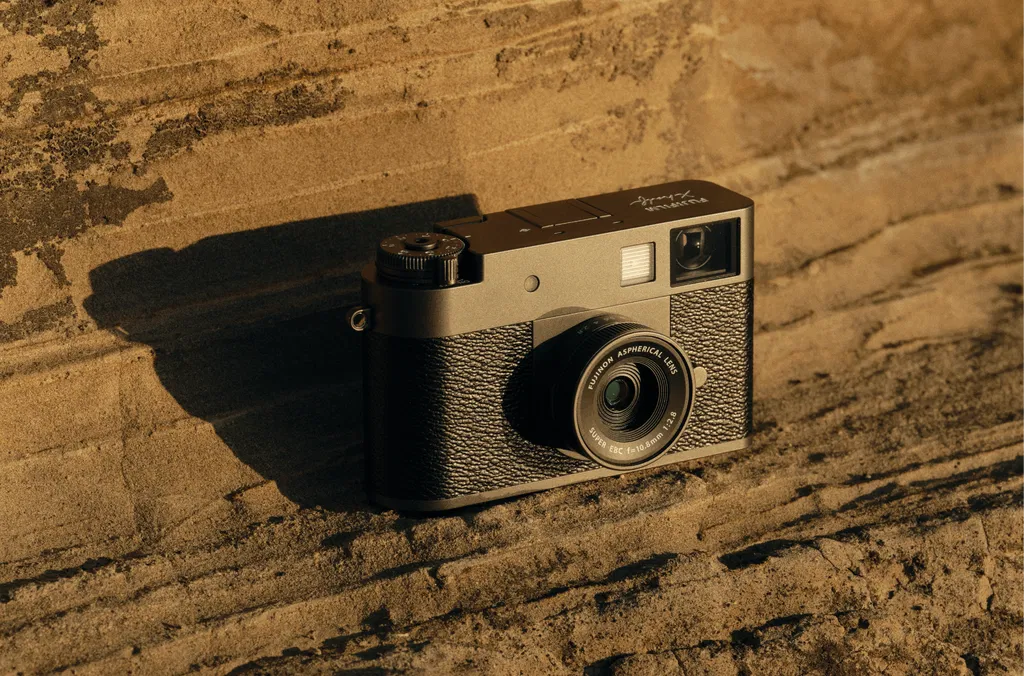
In daily use, the X half proved both rugged and refined. Weather-sealing kept out drizzle during a rainy street-shoot, and the grippy finish never felt slick—even when my hands got warm.
I carried it on long hikes and tight city streets, and the well-balanced layout meant no wrist strain, even after hundreds of shots.
The minimal, tactile controls invite deliberate shooting, making every frame feel intentional—exactly what an analog enthusiast craves.
Key Build Highlights
- Die-cast magnesium top plate for durability
- Textured synthetic leather grip for secure handling
- Compact dimensions: 128 × 68 × 35 mm; Weight: 280 g
- 2.14-inch tilting LCD that converts to a film-frame counter
- Weather-sealed chassis for light protection
Overall, the Fujifilm X half nails its retro aesthetic without compromising modern usability. It feels like holding a piece of photographic history—reinvented for today’s digital storyteller.
Film Mode & Analog Experience

The crown jewel of the X half is its true analog film mode, and using it feels like stepping back in time—without lugging around film rolls or waiting weeks for development.
To activate, I simply swiped down on the touchscreen, tapped “Film Camera Mode,” selected a 36- or 72-frame “roll,” set my ISO, and started shooting.
From that moment on, there’s no instant preview—just the satisfying click of the shutter and a digital counter ticking away. That 2.14-inch screen transforms into an authentic film-frame meter, reinforcing the analog vibe.
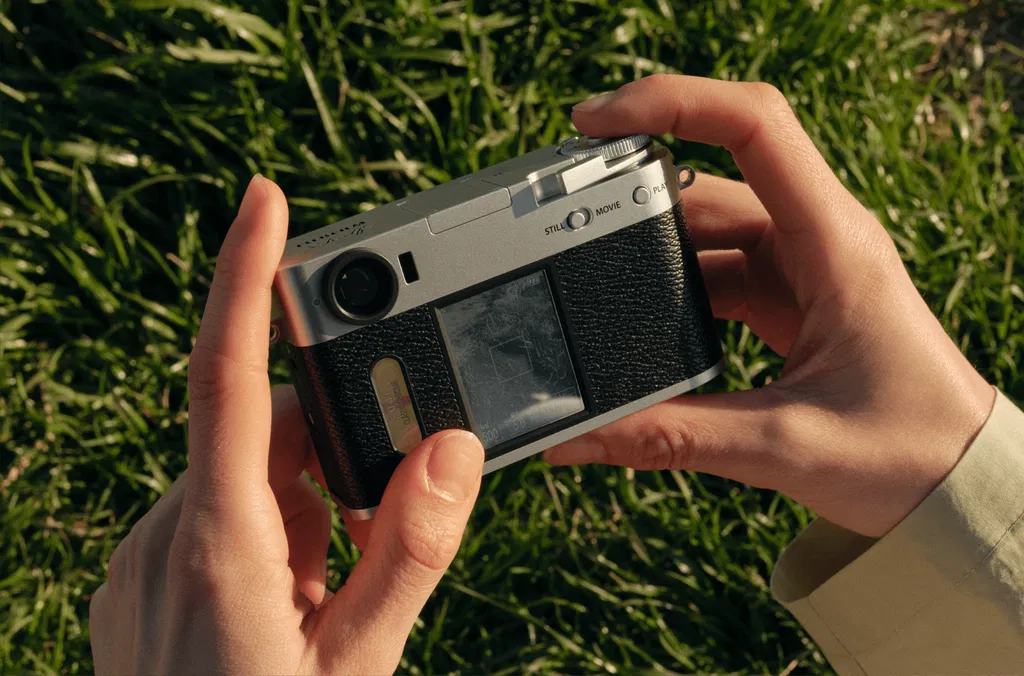
I experimented with all 13 built-in film simulations—from punchy Velvia to moody Acros and creamy Nostalgic Neg. The light-leak, double-exposure, and expired-film filters let me push creative boundaries without post-processing.
Shooting vertical half-frames (17 MP, 3:4) naturally encouraged me to craft diptychs—pairing two frames side by side for a narrative effect that’s tailor-made for Instagram.
Why It Works for Me
- No-preview suspense: Recaptures the thrill of film, making each shot count
- Film sims that pop: Velvia’s saturated greens and Nostalgic Neg’s warm tonality
- Creative filters built in: Light-leak, double exposure, vignette, and more
- Diptych storytelling: Two frames merge into one JPEG, perfect for visual tales
On a weekend street walk, I shot one full “roll.” When I “developed” it via Fuji’s app, a 180-second countdown recreated darkroom anticipation.
Then, swipe—there were my diptychs, each with the distinct Fuji color science I adore. It’s an analog-style workflow with zero lab costs, zero mess, and full digital flexibility.
Image Performance: Lens & Sensor
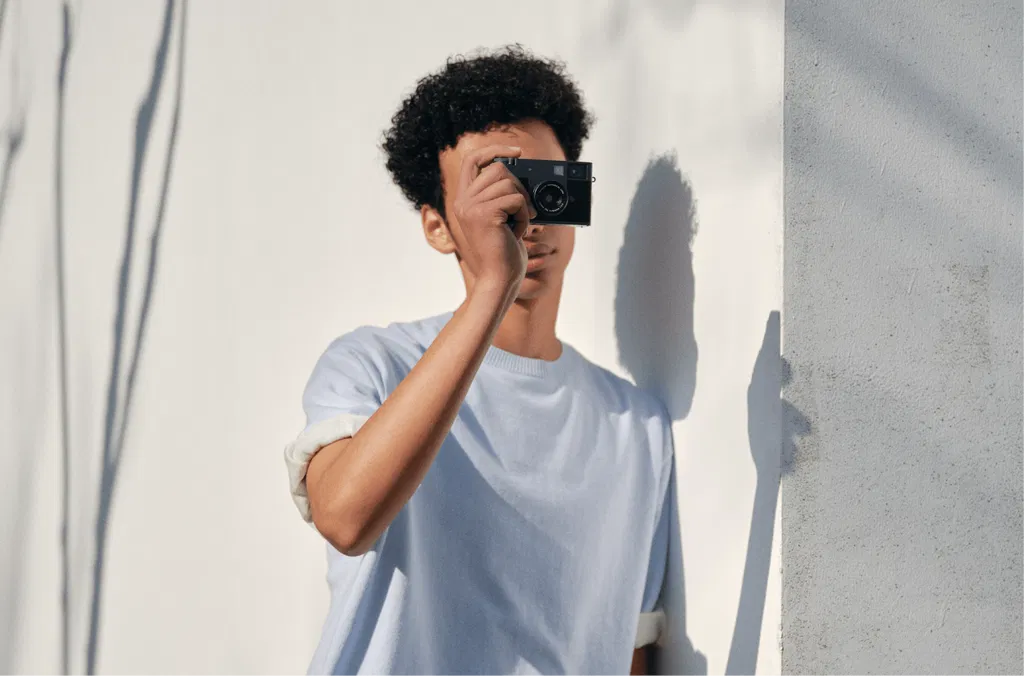
Beneath the retro shell of the X half beats a 1-inch BSI CMOS sensor and a sharp 32 mm f/2.8 prime (35 mm equiv.), a combo that delivers surprisingly robust image quality for such a compact shooter.
In bright sunlight, the lens resolves crisp detail from corner to corner. Portraits at f/2.8 yielded a pleasing background blur, while street scenes popped with contrast and clarity.
The sensor’s native ISO range of 200–12 800 (expandable to 100–25 600) handled low-light scenarios admirably—up to ISO 3200, noise remained fine-grained and easy to tame in post.
Fuji’s famed film simulations aren’t mere filters; they’re baked-in color profiles. Velvia delivered punchy reds and greens on a sunset shot, while Acros gave classic monochrome street captures an almost tactile grain.
Shooting a high-contrast alley, I still recovered highlight detail without crushing shadows—evidence of solid dynamic range.
Real-World Test Shots
- Urban sunrise: Vibrant Velvia tones, crisp detail in building facades
- Portrait indoors: Soft skin tones with Nostalgic Neg, controlled noise at ISO 1600
- Night street: ISO 6400 shot retained texture in dark alleys without mushy grain
The X half’s files stand up to social-media shares and modest print enlargements alike. For everyday travel, vlog-stills, or reportage, this little hybrid packs a punch that rivals larger mirrorless rivals—at a fraction of the size.
Video Capabilities & Creative Features

Although the X half’s heart is analog, it tucks a quirky video mode under the hood—geared more toward cinematic vignettes than YouTube vlogs.
You get Full HD (1920×1080) at 24 fps, with MOV/MP4 output. No 4K and no in-body stabilization might sound limited, but that’s intentional.
Shooting in 24 fps evokes classic film cadence, and any handheld shake adds character. I filmed a short market tour, then used the diptych lever to merge video clips or blend photo and video into one storytelling frame.
Creative Workflow
- Film-style countdown: Three-second timer adds suspense before each clip
- Diptych video: Merge two 5-second clips or mix stills+motion
- Built-in filters: Apply light-leak, vintage tints, or double-exposure effects live
I loved how every clip felt intentional. The slight vignette and film-sim color cast elevated everyday scenes into artistic vignettes.
Yes, you sacrifice silky smooth footage, but you gain soul. For quick social posts or narrative shorts, these quirks are endearing.
Connectivity & Workflow
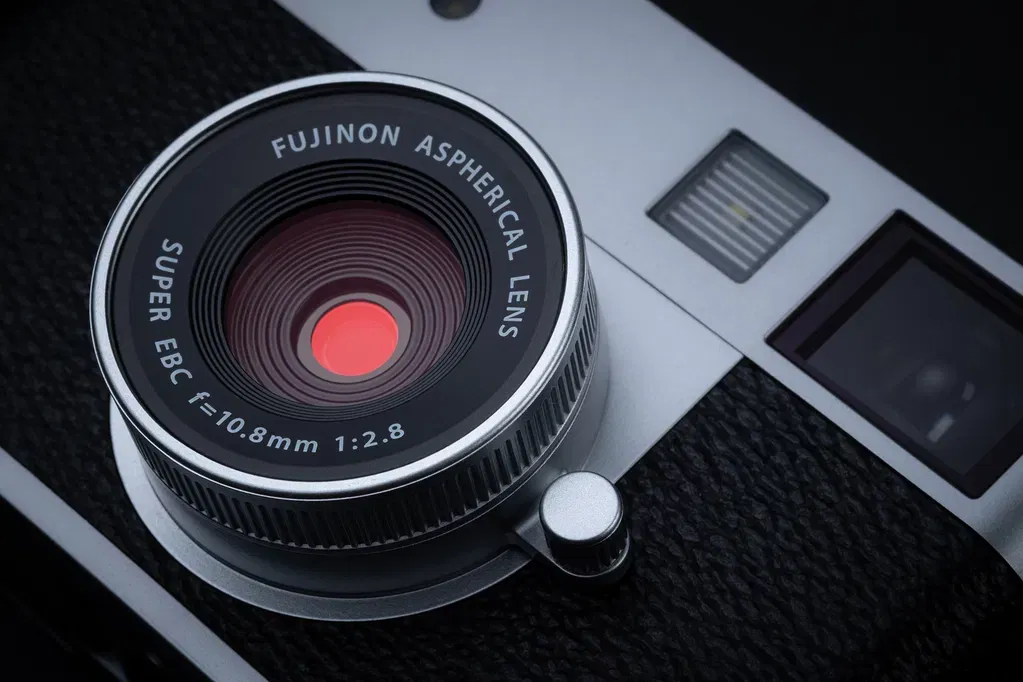
Fuji built a seamless bridge between analog mode and the digital world via the X half app and onboard Wi-Fi.
Within seconds, I connected on 2.4 GHz Wi-Fi, tapped “Develop Roll,” and watched a 180-second countdown on my phone.
When it hit zero, my diptychs and clips downloaded automatically. RAW + JPEG tethering in digital mode let me shoot remotely via live view—perfect for self-portraits or group shots.

App Features
- Film roll “development” with authentic timer
- Wireless transfer of JPEGs/RAW at up to 5 MB/s
- Remote trigger and basic settings control
- Geo-tagging sync via smartphone GPS
For my travel workflow, I shot in film mode, “developed” mid-day on the beach, then bulk-edited select JPEGs in Lightroom Mobile for social shares by dinner.
When shooting in digital mode, I used the Bluetooth tether for impromptu portraits—no fumbling with menus.
Battery Life & Charging

The X half runs on the NP-W126S (1 260 mAh), rated for ≈270 shots per CIPA. In practice, after 100 digital shots, a full 36-frame film roll, and two video diptychs, I still had about 40% left. Enabling power-off after 2 min and disabling Wi-Fi between transfers pushed me closer to the 300-shot mark.
Charging & Tips
- USB-C PD fast charge: 15 min recharge covers ~50 more frames
- Power-saving mode: Auto-sleep after 2 min inactivity
- Spare battery: One extra NP-W126S weighs just 60 g—carry it for full-day shoots
While not marathon-level, the battery easily lasted a weekend street session when I carried a spare. For analog-heavy days, I recommend one extra cell and your standard USB-C charger.
Pricing & Value for Money

At $849 (US) / £699 (UK), the Fujifilm X half sits in premium compact territory alongside:
- Sony RX100 VII: $1,300 (digital only)
- Canon G5 X II: $900 (digital only)
Here, you’re not just buying a digital pocket camera—you’re investing in a hybrid film-digital experience. You get:
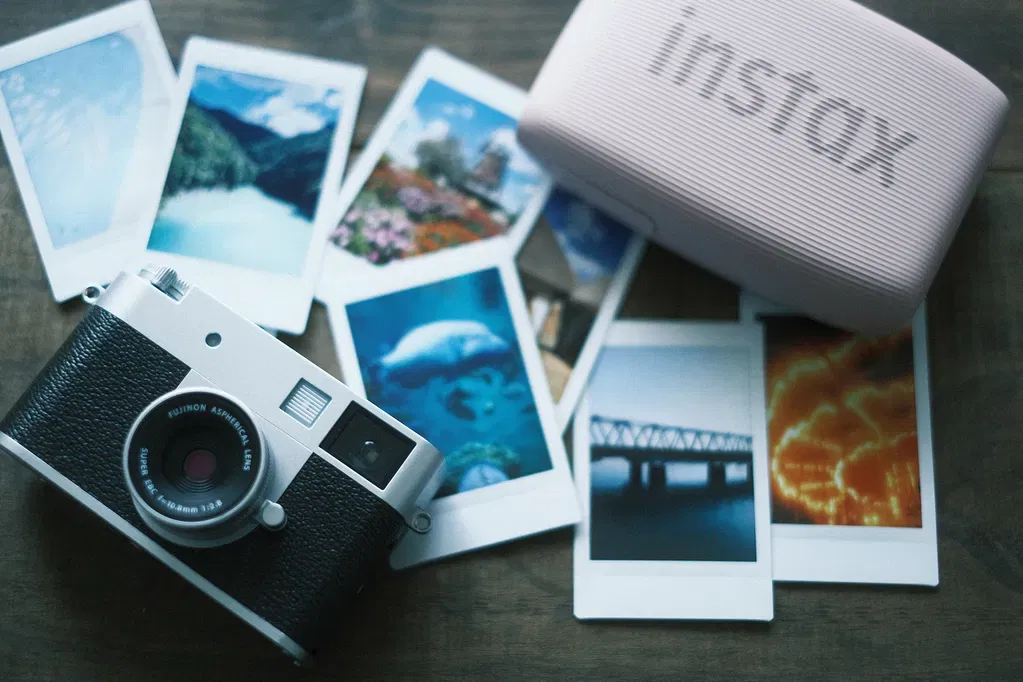
- 13 classic film simulations and creative filters
- True analog “no-preview” mode with diptych storytelling
- Premium build with magnesium top plate and weather sealing
- 1-inch sensor + 32 mm f/2.8 prime delivering outstanding image quality
If you crave tangible film aesthetics without lab hassles—and love the idea of mixing stills and motion into creative diptychs—this camera offers unmatched value.
Purely digital shooters might balk at the price, but for storytellers seeking a unique workflow, it’s worth every penny.
Final Verdict & Pros ⁄ Cons Summary

After weeks of urban exploration, sunset portraits, and film-style shoots, here’s my takeaway on the Fujifilm X half:
Pros:
- Authentic film-mode experience with no-preview suspense
- 13 classic film sims and playful creative filters
- Sharp 32 mm f/2.8 lens on a 1-inch BSI sensor
- Retro styling with durable magnesium top plate and weather sealing
- Unique photo/video diptych feature for storytelling
Cons:
- No 4K video or in-body stabilization
- Modest battery life—carry a spare
- Vertical half-frame orientation only (3:4 format)
If you’re after a deliberate shooting experience that marries analog charm with digital flexibility, the Fujifilm X half is a revelation. It’s more than a camera; it’s a creative ritual that rekindles the joy of photography.
Related:Best Budget Action Cameras 2025




